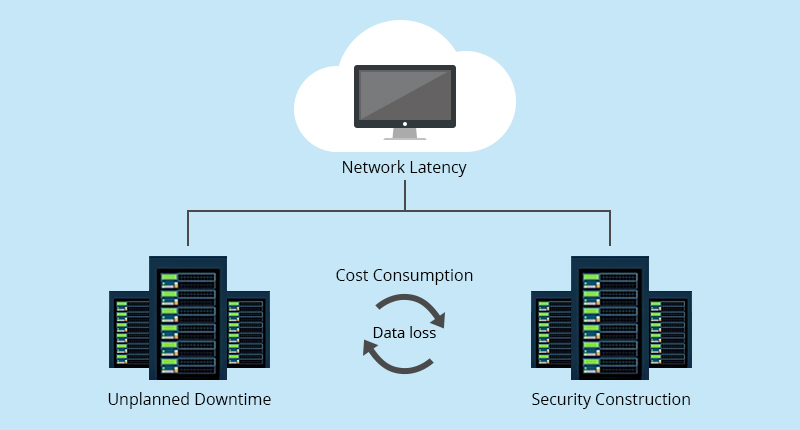Introduction
While there are potential difficulties related to data center migration, the advantages of moving from a physical framework, enterprise data centers, or on-premises data storage methods to a cloud data center or a hybrid cloud method are well worth the achievement.
Now that we’ve gone over the potential difficulties of data center migration, how do businesses allow a successful data center migration while productively managing risk?
VoxturrLabs
We prioritize protecting client data and information and keeping up with data security best practices, laws, and compliance requirements. Our staff works hard to deliver digital solutions to meet your company’s needs.
Discovery:
During the discovery stage, companies should acknowledge and document the entire data center footprint. It means understanding the existing hardware mapping, software applications, storage layers, operating systems, networking arrangements, security needs, models of operation, licensing and compliance requirements, and other relevant assets under a digital transformation agency.
This stage aims to have a detailed view of all relevant assets and assets of the current data center footprint under the cloud migration strategy.
The key milestones in the discovery stage are:
- It generates a shared data center inventory impression: Every team member of the data center relocated to the Cloud should be conscious of the assets and resources that will go live under a digital transformation agency.
- Drawing out an initial cloud platform authority design: This involves associating centralized ideas of the cloud platform organization, such as folder structure, IAM, NAM, and more, under the cloud migration strategy.
Planning:
When a company enters the planning phase, they leverage the assets and deliverables assembled in the discovery phase to create migration waves sequentially planted into non-production and production environments under a digital transformation agency.
Typically, it is best to aim for non-production migration signs first, which assists in identifying the sequence of signals to migrate first under the cloud migration strategy. To start, observe the following:
- Designing the current server index to the cloud platform’s machine categories: Each current function will generally move on a virtual machine with similar computing power, memory, and disk under a digital transformation agency.
- The current workload is often overprovisioned, so each workload is evaluated to ensure that it is migrated onto the suitable VM for that given workload under the cloud migration strategy.
- Timelines: Businesses should set their estimated migration dates under a digital transformation strategy.
- Workloads in each association: Figure out what migration signs are grouped by, i.e., non-production vs. production requests.
- The measure of code liberation: Factor in any upcoming code declares as this may affect the decision of whether to migrate sooner or later under the cloud migration strategy.
- Time for framework deployment and testing: Allocate adequate time for testing infrastructures before moving to the Cloud under a digital transformation agency.
- The number of application reliances: Migration order should be determined by the number of application reliances.
- The applications with the fewest reliances are generally suitable applicants for migration first. In comparison, wait to migrate an application that revolves around multiple databases under the cloud migration strategy.
- Migration complexity and possibility: Migration order should also consider complexity. Tackling more specific aspects of the migration first will generally yield a more successful migration under a digital transformation agency.
As mentioned above, the best migration wave practice starts with more predictable and straightforward workloads under the cloud migration strategy. For example, companies should begin migrating file shares first, then databases and domain structure, and save the apps last.
However, the complexity and dependencies sometimes don’t permit a straightforward migration under the Cloud migration strategy. In these facts, utilizing an experienced service provider with experience with these complex environments will be cautious under a digital transformation agency.
Execution:
Once companies have expanded a plan, they can bring them to fruition in the execution stage. Here, businesses must be deliberate about the steps and configurations they create.
In the execution stage, companies will put into place framework components and ensure they have been configured appropriately, like IAM, networking, firewall rules, and service accounts, under the cloud migration strategy.
Execution also includes logging and monitoring to ensure applications continue functioning with the necessary performance under the cloud migration strategy. Agile application debugging and testing is implemented for the execution phase to be successful under a digital transformation agency.
Optimization:
The last stage of a data center migration project is optimization. After a business has migrated its functions to the Cloud, it should conduct periodic responses and planning to optimize the workloads under the cloud migration strategy.
Optimization includes the following activities:
- Resizing machine types and disks
- Leveraging software like Terraform for more agile and predictable deployments
- Improving automation to reduce operational overhead
- Bolstering integration with logging, monitoring, and alerting tools under a digital transformation agency
- Adopting managed services to reduce operational overhead under the Cloud migration strategy

